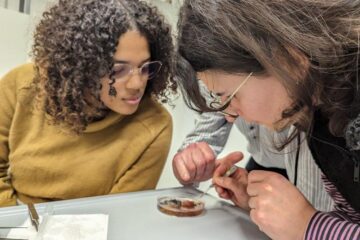Researchers propose new coupling strategy for organic wastewater treatment

Researchers propose new coupling strategy for organic wastewater treatment
Credit: DICP
A joint research group led by Prof. SUN Chenglin, Porf. WEI Huangzhao and Prof. LI Rengui from the Dalian Institute of Chemical Physics (DICP) of the Chinese Academy of Sciences (CAS) has developed a new coupling strategy of photocatalytic water oxidation and catalytic wet peroxide oxidation (Photo-CWPO) for efficient organic wastewater treatment.
This study was published in Applied Catalysis B: Environmental on August 17.
CWPO technology is a kind of advanced oxidation process for advanced treatment of organic wastewater using hydroxyl radical (·OH), which is generated from hydrogen peroxide oxidation catalyzed by Fe2+. Nevertheless, low utilization efficiency of H2O2 and difficulty in iron ions cycling lead to high cost and indirect energy consumption, which limits its further large-scale application.
In the proposed Photo-CWPO strategy, efficient circulating of Fe3+/Fe2+ ions was achieved through Fe3+ ions reduction by photogenerated electrons, and meanwhile, photogenerated holes were used to degrade organic pollutants.
The researchers used decahedron BiVO4 photocatalyst to realize efficient circulating of Fe3+/Fe2+ ions with selectivity of ~100%, owing to the unique spatial photogenerated charge separation between different facets of the BiVO4 crystal, which inhibited the formation of iron sludge in the traditional CWPO process.
H2O2 species could be generated via a two-hole-involved oxidation process of H2O on {110} facets of decahedron BiVO4 crystals during the Fe3+ reduction process on the {010} facets, which could replenish the H2O2 consumption and fully utilize both photogenerated electrons and holes for degradation of pollutions. This strategy achieved a much higher total organic carbon removal rate in the coupling system than CWPO process.
“The Photo-CWPO strategy could be applied to mineralize various organic pollutants and showed great universality and stability,” said Prof. SUN.
“We have applied this strategy for the treatment of wastewater from coal chemical industry, methanol to olefin industry and unsymmetrical dimethylhydrazine industry, all of which showed good treatment efficiency,” said Prof. WEI.
Journal: Applied Catalysis B Environmental
DOI: 10.1016/j.apcatb.2022.121858
Method of Research: Commentary/editorial
Subject of Research: Not applicable
Article Title: Coupling photocatalytic water oxidation on decahedron BiVO4 crystals with catalytic wet peroxide oxidation for removing organic pollutions in wastewater
Article Publication Date: 17-Aug-2022
Media Contact
Jean Wang
Dalian Institute of Chemical Physics, Chinese Academy Sciences
wangyj@dicp.ac.cn
Office: 41182464221
All latest news from the category: Ecology, The Environment and Conservation
This complex theme deals primarily with interactions between organisms and the environmental factors that impact them, but to a greater extent between individual inanimate environmental factors.
innovations-report offers informative reports and articles on topics such as climate protection, landscape conservation, ecological systems, wildlife and nature parks and ecosystem efficiency and balance.
Newest articles

A new look at the consequences of light pollution
GAME 2024 begins its experiments in eight countries. Can artificial light at night harm marine algae and impair their important functions for coastal ecosystems? This year’s project of the training…

Silicon Carbide Innovation Alliance to drive industrial-scale semiconductor work
Known for its ability to withstand extreme environments and high voltages, silicon carbide (SiC) is a semiconducting material made up of silicon and carbon atoms arranged into crystals that is…

New SPECT/CT technique shows impressive biomarker identification
…offers increased access for prostate cancer patients. A novel SPECT/CT acquisition method can accurately detect radiopharmaceutical biodistribution in a convenient manner for prostate cancer patients, opening the door for more…





















